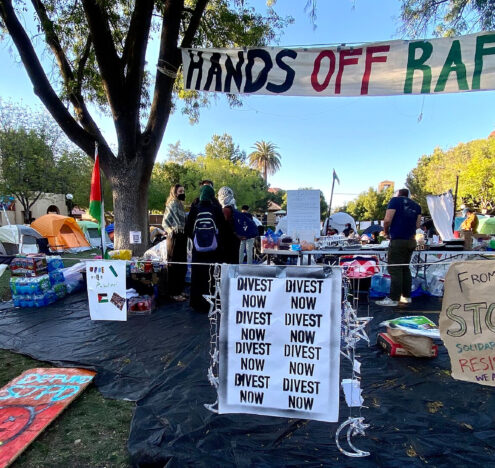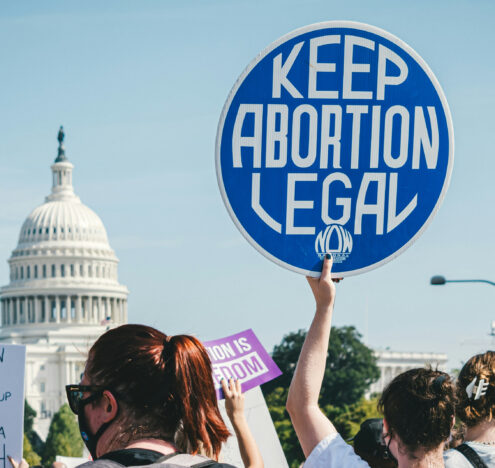In the past year, prominent Republicans have made headlines for endorsing the use of United States military forces against drug cartels on Mexican territory. While many have pointed out the flaws in this plan, few have noticed that US influence has already made Mexico a more militarized country in recent years.
Between 2006 and 2021, the Mexican military took over 246 civil functions, including some in health, education, and social programming. The rate of military expansion into civil life has increased since 2018 under the administration of President Andrés Manuel López Obrador. In addition to an expanding footprint in domestic security, the military has been involved in managing ports of entry, developing infrastructure projects, and running the Maya Train.
Despite its prominence in domestic affairs, the Mexican military has come under scrutiny from human rights organizations for actions carried out on Mexican soil. According to Human Rights Watch, the military has tortured, executed, and arbitrarily detained civilians. In a particularly shocking case, the armed forces refused an order from López Obrador to turn over documents relating to the 2014 Ayotzinapa college student disappearance.
Corruption and impunity reach the highest levels of the Mexican military, as evidenced by the US authorities’ arrest of former Defense Minister Gen. Salvador Cienfuegos, who was exonerated in Mexico after López Obrador took exception to the US meddling in what he perceived to be domestic affairs.
US Encouraging Mexican Militarization
Rather than opposing the expansion of the Mexican military in civilian life and standing up for the rights of Mexican citizens, the US has encouraged the trend. The most obvious example has been migration, where both the Donald Trump and Joe Biden administrations have seemed willing to do whatever it takes to avoid migrant build-up at the US-Mexico border.
In 2019, a formal agreement between the US and Mexico declared that Mexico would take “unprecedented steps” to curb migration, including the deployment of its National Guard throughout the country, with priority given to its southern border with Guatemala and Belize.
The agreement came after former President Trump threatened Mexico with tariffs if it did not reduce the number of migrants reaching the US border. Under the Biden administration, the US continued to successfully use diplomatic pressure to keep Mexican troops along the Mexico-Guatemala border. By 2021, the military and the National Guard were responsible for 100% of migrant detainments in the southern states of Oaxaca and Chiapas and 25% across the country.
Migration
Unsurprisingly, the militarization of the Mexico-Guatemala border has been unsuccessful. Military personnel lack the training to deal with vulnerable individuals, and racial profiling has been so common in detentions that the Mexican Supreme Court outlawed them outside of international transit hubs.
In one case, men with machetes and a bulldozer cleared out a migrant encampment in the north. In another, National Guard troops watched as a caravan of 6,000 migrants crossed the Guatemalan border without resistance. Ultimately, military personnel have proven unsuited to enforcing immigration laws and managing borders. Despite the US-Mexico militarized approach, migrant encounters by US Border Patrol are higher than ever.
Unsurprisingly, the militarization of the Mexico-Guatemala border has been unsuccessful.
US citizens in Cancun represent a less obvious driver of militarization in Mexico. In the spring of 2023, shootings in the tourist zones of Cancun and Acapulco made international headlines and raised safety concerns for travelers. In response, the Mexican government deployed 8,000 National Guard members to beach cities and infrastructure points key to tourism.
While the US government did not play a role in this action, the tourism industry and some US-based media outlets covered the move supportively, reminding tourists that military personnel were there to keep them safe.
Criminal Networks Adapt
While it is important for the government to take action against criminal networks, the US and Mexico should know that the military is not the right tool to combat organized crime.
In 2006, then-Mexican President Felipe Calderon declared war on the cartels with the backing of US President George W. Bush. The two leaders agreed on the Mérida Initiative in 2007, which has since resulted in over $3 billion of US military aid to Mexico. Under the Mérida Initiative, Mexico successfully captured or killed 25 of the 37 highest-priority cartel kingpins, but the promise of a secure Mexico remained elusive.
The war on cartels and the Mérida Initiative demonstrate the pitfalls and failures of military action for maintaining security. As kingpins fell, criminal organizations adapted, creating smaller, more resilient, and oftentimes more violent groups. In 2006, the year Calderon declared war on the cartels, 10,000 homicides took place in Mexico. That number began skyrocketing in 2008, and there have been over 25,000 homicides in Mexico each year since 2016.
After nearly 20 years of failed policy pushing Mexico toward militarizing its security, tourism, and immigration, the US would be wise to reconsider its approach to relations with its southern neighbor.
US Weapons in Mexico
While Republicans consider a military intervention, those truly interested in Mexican security know the country needs less US-manufactured weaponry, not more.
According to former Mexican Secretary of Foreign Affairs Marcelo Ebrard, 60% of firearms seized in Mexico can be traced back to 10 US counties along the border. In addition, drug cartels are using weapons made for the exclusive use of the US Army, including machine guns, grenades, and rocket launchers. It is unclear exactly how the cartels are accessing these weapons, but weapons manufacturers, military stockpiles, and Central American partners are likely to be investigated.
To combat the cartels and lay the foundation for a less militarized Mexico, the US needs to take gun trafficking into Mexico as seriously as it takes drug trafficking out of it. As of June 2023, authorities have used the 2022 Bipartisan Safer Communities Act, which made gun trafficking a federal offense, to charge more than 100 people.
The US can investigate stores and purchasers identified by Mexico and slow the flow of weapons across the border. In addition, the US should investigate and report on US military weapons being used by Mexican cartels and respond accordingly.
Good Governance
In addition, the US should support development and good governance in Mexico and Latin America as enthusiastically and consistently as it does security.
The Obama administration’s Mérida 2.0 introduced “building strong and resilient communities” as a pillar of the agreement. However, the Trump administration refocused Mérida around migration and transnational crime in 2018.
After President López Obrador pulled out of the Mérida Initiative, the US and Mexico agreed to the Bicentennial Framework for Security, Public Health, and Safe Communities. The framework takes a “whole of government approach” to shared challenges, including development, health, and safety. This strategic approach is a step in the right direction. Still, it needs long-term investment to be successful, a tall order given the instability in US-Mexico relations over the past decade.
Rather than a revolutionary new solution to cartel violence, a US military intervention in Mexico would be a mere continuation of two decades of failed policy. The US should become a consistent partner committed to peace in order to support stability in Mexico.





















